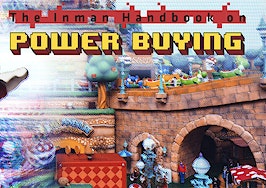A new report from real estate tech startup zavvie argues that so-called “power buyers” have seen explosive growth recently, while also claiming that the demise of Zillow’s iBuying business was the company’s own fault.
The report, out Tuesday, details the state of the industry in the third quarter of 2021. It notes that companies providing, among other things, cash backing for offers, home leaseback options, and buy-before-you-sell tools — all services provided by firms known as power buyers — have become increasingly popular among consumers.
For instance, cash offer startup Ribbon saw demand for its signature service jump ten-fold this year, according to the report.
Additionally, EasyKnock, which buys homes and then leases them back to the original owners, saw its business double in the third quarter compared to the first three months of the year. And home swap pioneer Knock, the report adds, has now reached a total of 69 markets in 14 states — a major jump from the only three markets it served at the end of 2019.
The report goes on to note that demand for power buyers’ services increased specifically “in smaller markets where the national iBuyers aren’t present.”
The report comes after a record period of home price appreciation. That price growth was the result of soaring demand as the coronavirus pandemic shifted consumer preferences, and that in turn made the ease and simplicity of things like cash offers more appealing than ever before.
In a statement, zavvie — which provides a marketplace where real estate agents and their clients can compare offerings from iBuyers and power buyers — said that specifically “cash offers drive power buyers growth.”
In addition to growth among power buyers, the new report also notes that iBuyers saw increasing demand in the third quarter of the year.
“iBuyer purchases increased substantially in Q3 by 46 percent from Q2,” the report states. “Without question, this was a breakthrough quarter in terms of iBuyer purchase volumes.”

Credit: zavvie
At the same time, the third quarter of this year also saw iBuyers’ offers pull back somewhat; they fell from an average of 104.1 percent of market value in the second quarter to 103.1 percent of market value in the third quarter. In September alone, iBuyer offers averaged 100.6 percent of homes’ market value.
“iBuyers appear to be bearish on the current market conditions and are essentially not paying above market any longer,” the report also notes.

Credit: zavvie
The report goes on to state that iBuyers’ “buy boxes,” or the criteria they use to identify potential homes for purchase, has grown more expansive over 2021.
Case in point: The median purchase price for iBuyers collectively “increased from $280K in Q4 2020 to $413K in Q3 2021, a whopping 47 percent gain,” the report points out.
The findings on iBuying are among the most noteworthy in the report, largely because Zillow — long the second-largest iBuyer after Opendoor — announced on Nov. 2 that it plans to wind down its iBuying operations. The news sent shock waves through the real estate industry and prompted an ongoing debate about the viability of the iBuying business model.

Stefan Peterson
However, in a statement Tuesday, zavvie co-founder and Chief Data Officer Stefan Peterson pointed to his company’s new report saying, “paraphrasing Mark Twain, the reports of the death of iBuying by some has been greatly exaggerated.” Peterson went on to note that Zillow’s exit from the sector could decrease its overall volume, though other companies may step in to fill the vacuum.
Peterson’s comments echo recent findings from real estate analyst Mike DelPrete, who weeks ago noted that “for the time being, iBuyers have never been bigger.”
In any case, zavvie’s report ultimately pins the demise of Zillow Offers on Zillow itself, rather than on any fundamental flaws in the iBuying business model.
“It’s clear that Zillow’s decision,” the report notes, “was completely attributable to internal factors specific to Zillow rather than to any lack of consumer demand.”






